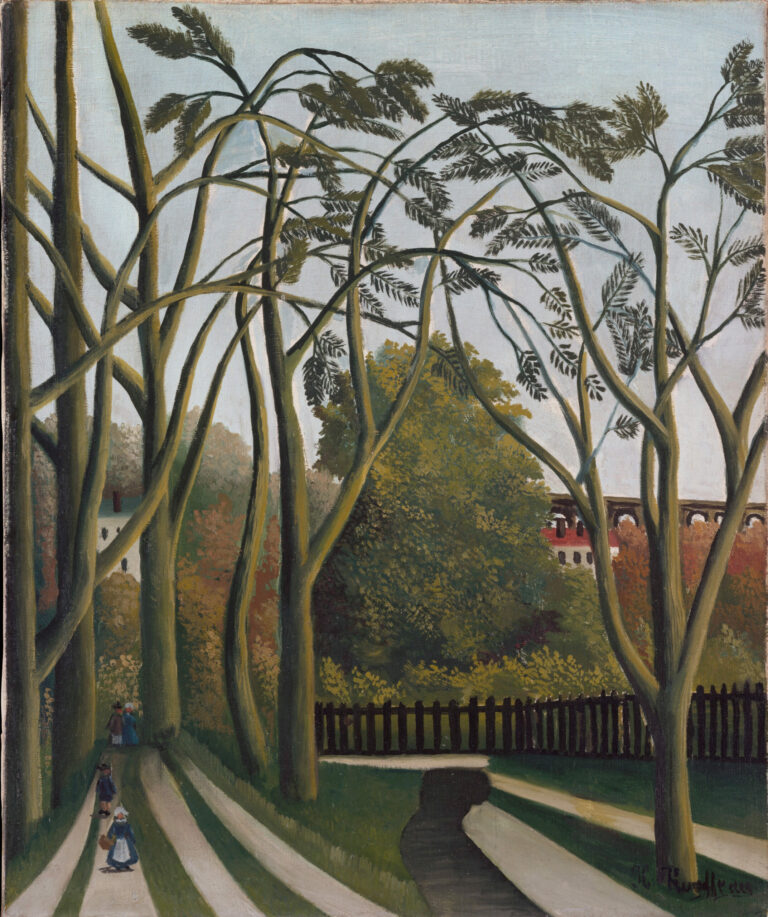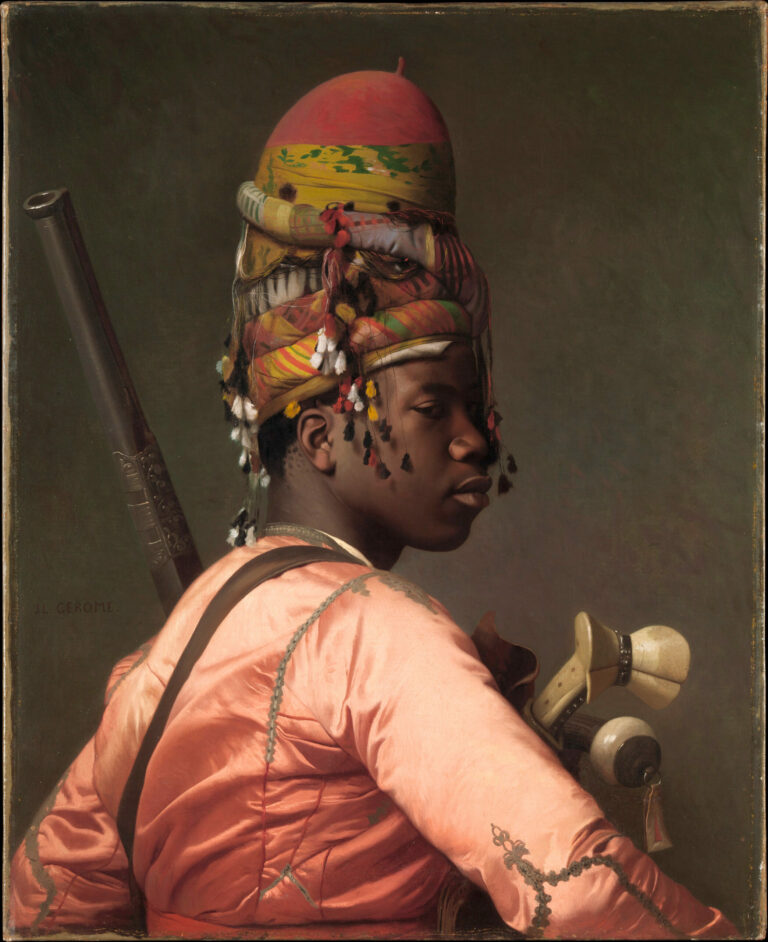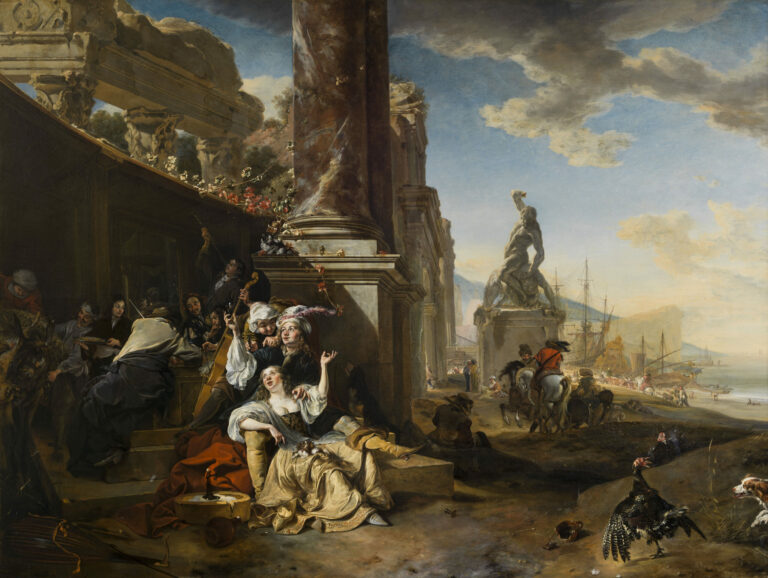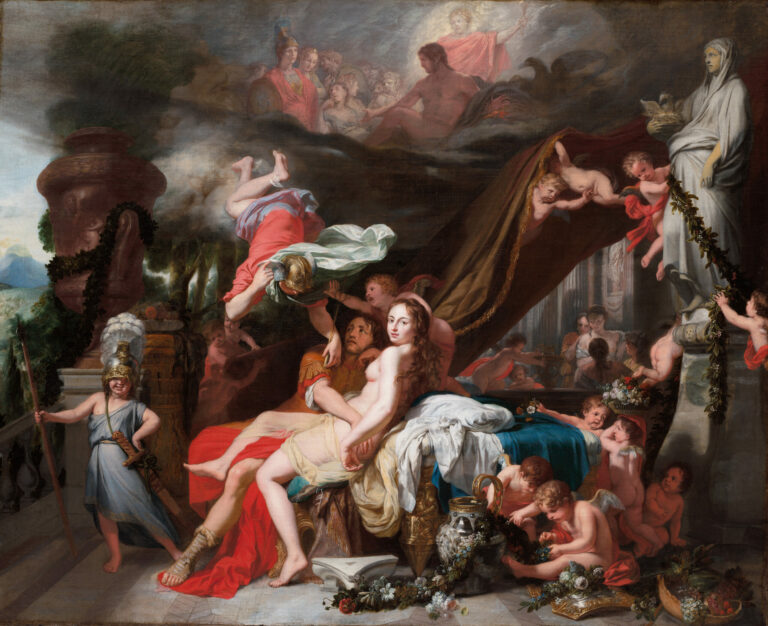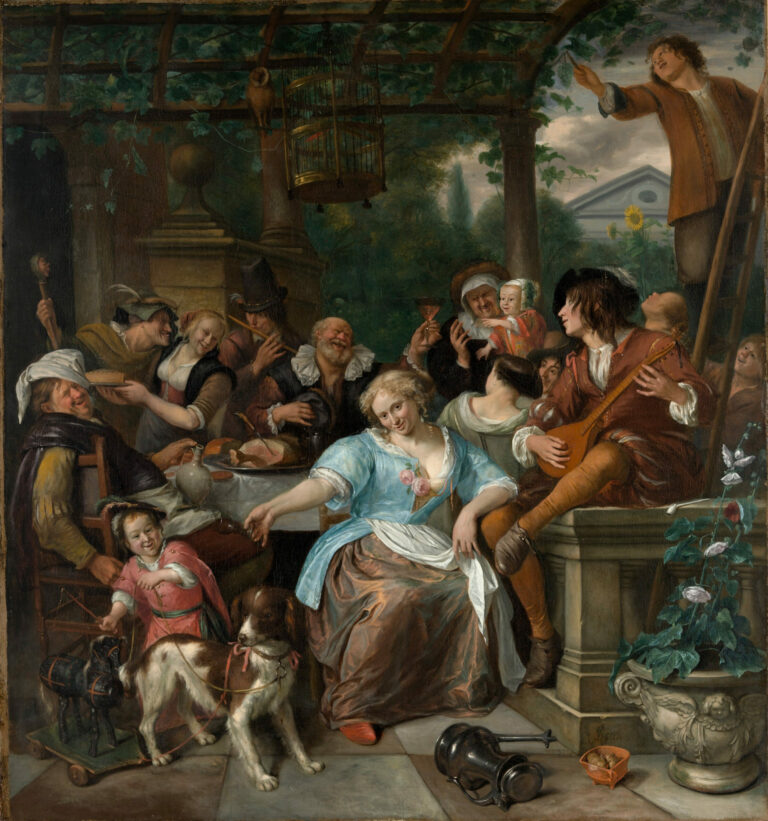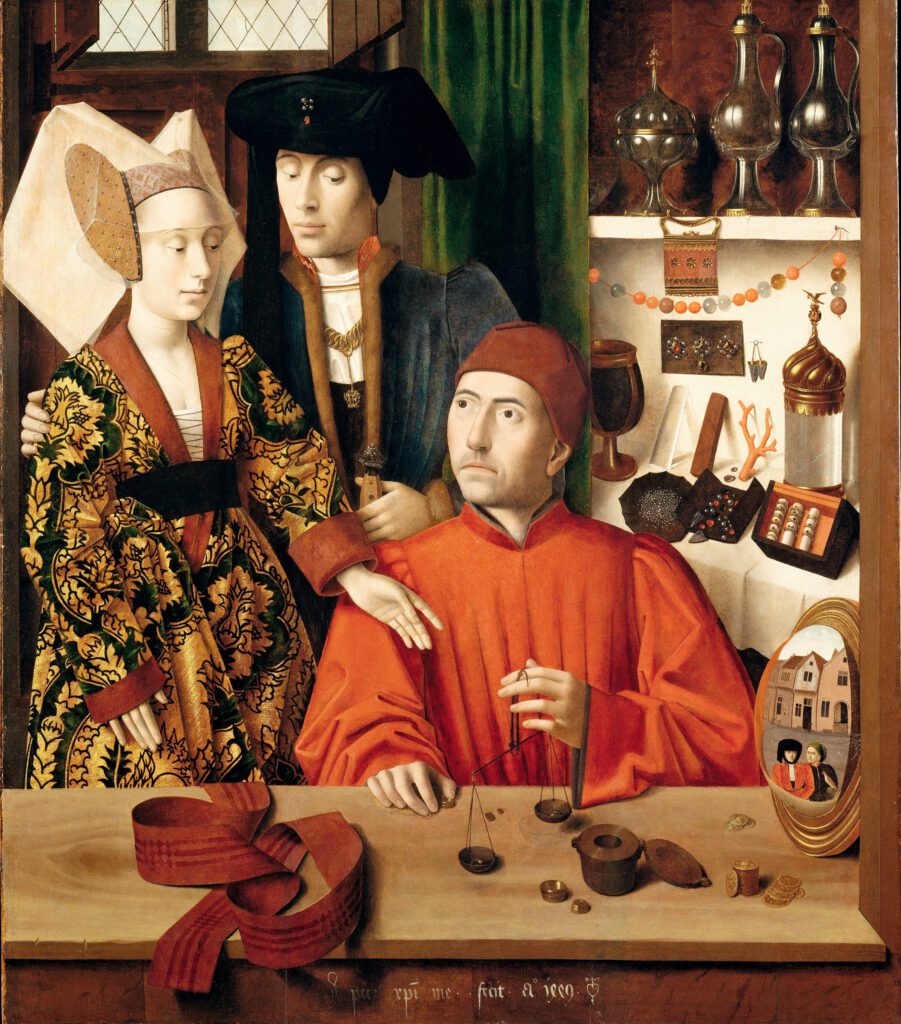
A Glimpse into Flemish luxury trade: the goldsmith’s workshop. This remarkable painting immerses us in the refined world of 15th-century Flemish luxury commerce.
With scientific precision, Petrus Christus invites us into a goldsmith’s shop where an intimate scene unfolds with extraordinary clarity. At the center, the scarlet-clad craftsman delicately manipulates a scale, likely weighing a wedding ring for the attentive couple observing him. The masterful composition arranges the figures within a perfectly controlled architectural space, illuminated by lateral light that makes the precious objects glimmer with lifelike brilliance.
The artist’s technical virtuosity shines through in his meticulous rendering of materials: lustrous velvets, gleaming metalwork, and delicate glassware. Each object narrates a story of a world where commerce, artistic craftsmanship, and social relations intertwine. The convex mirror in the foreground, reflecting a street scene, adds unexpected depth and situates this shop within the vibrant urban life of Bruges.
For Further Exploration
- A Goldsmith in his Workshop, by Petrus Christus, 1449
- 98 x 85.2 cm
- The Metropolitan Museum of Art, Fifth Avenue, New York, on display in gallery 953
- https://www.metmuseum.org/art/collection/search/459052
Petrus Christus (c.1410-1475/76), successor and spiritual heir to Jan van Eyck, exemplifies the excellence of the Bruges school in the mid-15th century.
Born near Antwerp, he acquired citizenship in Bruges in 1444, signaling his permanent settlement in this major commercial and artistic center. Christus developed a unique style, combining the Eyckian legacy—particularly the mastery of perspective and striking realism—with a more humanist sensibility and innovative compositional clarity. As the first Flemish painter to rigorously employ linear perspective, he introduced a spatial unity to his works that would profoundly influence subsequent generations.

